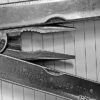Add solar panels to the list
The list, referred to in this post’s title, is not a shopping list, although solar panels are on that one too. I was really talking about the list of things we really know very little about, but need to!
If, while cruising on Katana, we plan on avoiding marinas with shore power, we are going to need to have a method to keep our batteries “topped up.” It seems that the cheapest and easiest way to do this is to maximize the amount of solar panels that we can carry. What is often recommended is to take an “energy survey” of your boat, to determine your energy requirements. To me, it seems like we will primarily be limited by the space we have to hold these panels, so what we end up with is what we end up with. If we don’t have the ability to keep our batteries charged with the panels that we have, we will then need to look towards additional methods.
I found a number of places in the US which sell solar panels at somewhat reduced prices. Northern Arizona Wind & Sun is one of them. In looking around on their website and on others, and reading about what some other cruisers have had to say, and taking various measurements on our boat, I think we are now leaning towards getting (at least) 2 – Kyocera KD-135 panels.
First issue… how/where to mount them. Constructing a framework over our dinghy davits seems like the best way. A couple of things I have read about panels is that we need to avoid any shading on the panels if we can help it. I have also read that having the ability to tilt them towards the sun, changing that angle from time to time, will increase their output. So, the question I had is, if we were going to prioritize those two requirements, which one is most important? I “think” the shading issue is, which is what I will be working to solve first.
Second issue… how are they actually tied into the system? This question could probably be answered easily by Katana’s previous owner. We already have a 150W Solar Panel array (3 x 50 watts), located on cockpit hardtop, so there must be a method already in place for this kind of thing. I just need to figure out what it is.
Thirdly there is the issue of charge controllers / regulators. A charge controller, or solar controller, regulates the voltage and current coming from your solar panels to your batteries. Do we have such a thing? Do we need one? I really have no idea. 🙁
Oh well… I just sent our Arborist friend a message to see if we are still on for tree climbing tomorrow. If we do go I sure hope I don’t end up hanging upside down like this again!

Zip Lining in the Riviera Maya.




Mike,
We went with 3 Kyocera 135’s and an Outback Flexmax 60 charge controller from http://www.Affordable-Solar.com. Had a custom stern arch made and mounted the 3 panels on top of the arch. Mounted the charge controller next to the battery charger which let us tie into the battery circuit right at the charger.
The arch allowed us to incorporate an antenna farm, outboard crane, upper dinghy/kayak storage, a future windgen mount, satdome mount, and a hammock :-).
I have photos on the Yahoo Lagoon Owners site if you want to register there.
$$$ but very happy with the arrangement.
Hi Kirk
I would love to see those pics. By Yahoo Lagoon Owners site do you mean the yahoo group?
http://groups.yahoo.com/group/lagooncatowners/
Mike
Yes, that is the site. I think you can read posts without registering but you probably have to register to view the photo albums, although registering is no biggie. Our photos are filed under “Ainulindale”. Great site with lots of information. Cheers! And happy climbing.
Kirk.
Cool. I’ll register. Thanks.
Great pics, and beautiful boat, Kirk!
I see from the pics that you chose to bypass your boats original dinghy davits and use the higher, new ones on the arch. Can you tell me why?
The upper davits help get the dinghy higher for offshore passages. Just a little extra safety in following seas. At 72′ I am too tall to go south on the ICW. I kept the lower davits for harbor/island hops. It takes some doing to get the dinghy up and over the lower davits. This arrangement also allows us to store a kayak without having to work around it on deck.
Thanks for the clarification.
Mike,
When you are contemplating the addition of structures (even just adding panels on the existing davits) be sure to think through the kind of sailing you plan to do and what other types of activities are likely to take place in the area of the planned structure, such as deploying/retrieving a drogue, retrieving COB, fishing, grilling, watching the sunset. Also, when mounting solar panels, keep in mind that you may need to remove them temporarily in the event of severe (tropical storm/hurricane) weather.
Also, I agree that minimizing shadow is a priority over tilting the panels. While there are great efficiencies to be gained from tilting, what I hear anecdotally is that most people with the capability to tilt eventually find it too tedious a process to be practical. Most only go with fore and aft adjustment as opposed to side to side, however, the chances of always being anchored with aft to the south is unlikely. Kirk
We have the predecessor to the Kyocera panel you are considering and are very happy with it. In a sunny southern climate, I’d expect the 135W Kyocera to put out around 40 usable Amp-hrs a day. I agree that you should prioritize the panel being shade-free. The sun is strongest during the few hours around noon when tilting would not make a difference. Tilting will give you a few extra amps during the morning and evening, but shading on the panel (particularly during peak sun) really diminishes its output.
You definitely need a charge controller. You’ll be producing enough amps to overcharge the battery without a controller. The controller also reduces the panel output voltage to what most efficiently charges the battery. The panel is wired into the controller, and the controller is then wired into the battery bank. As far as boat systems go, solar panels are actually pretty straightforward!
Thanks Eric. It’s nice to hear that I am stumbling along on the right track!
If you shade a panel on a column, you loose some amperage.
If you shade a panel on a row, you loose voltage, which means 100% of your usable output.
The trick is to know which is which. Ask the manufacturer.
A charge controller does cost some output. Yes, you need one, but a by-pass is good if you do not over use it.
Interesting Drew. I will look into that for sure!